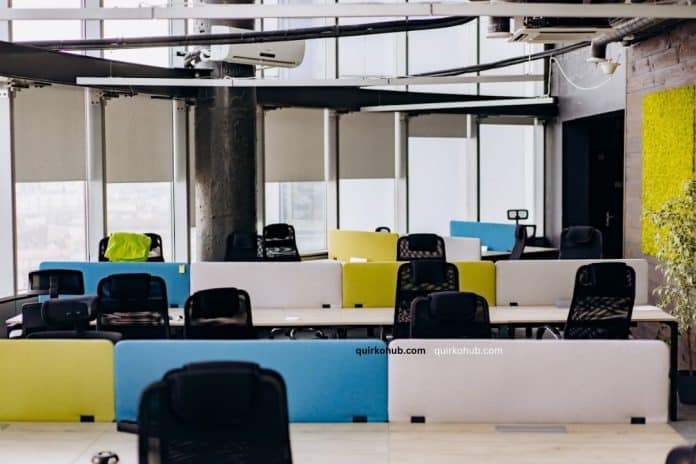In the dynamic landscape of commercial establishments, maintaining a comfortable environment is important for both employees and customers. A well-regulated temperature can significantly influence productivity, customer satisfaction, and energy costs. This article explores practical tips and a variety of options for effectively managing heating and cooling in commercial settings. Understanding the unique needs of your space will help you make informed choices about your climate control systems.
Assessing Your Heating and Cooling Needs
Every commercial space is unique, ranging from small offices to large warehouses. To establish an effective climate control system, it’s critical to assess the specific heating and cooling needs of your environment. Factors such as the size of the building, the layout, the number of occupants, and the equipment used within can drastically influence your heating and cooling requirements.
This will help ensure your system operates efficiently and effectively. Understanding peak usage times will guide your system’s operation schedule. A retail store may see more foot traffic during certain hours, necessitating a different strategy than a quiet office. Your heating and cooling strategy should be flexible enough to adapt to shifting needs throughout the day or seasons.
Selecting the Right System
Choosing the appropriate heating and cooling system is fundamental to achieving optimal comfort. Options range from traditional furnaces and air conditioning units to innovative systems such as heat pumps and geothermal units. Each option has its benefits and drawbacks, and the right choice depends on your specific needs and budget. For small to medium-sized commercial spaces, split systems or packaged units may provide an economical solution, allowing for efficient temperature control.
Consider energy efficiency ratings when selecting your system. Investing in higher efficiency technology can lead to significant long-term savings. Incorporating programmable thermostats can enhance the operation of your chosen system, adjusting settings based on occupancy and time of day to further optimize energy consumption. As you explore these options, make sure to read more about specific configurations that may suit your building’s requirements and enhance performance. Consulting with a qualified HVAC professional can help ensure you choose a system that balances comfort, cost, and efficiency for your unique space.
Regular Maintenance is Key
Establishing a consistent maintenance regime is paramount for the longevity of your heating and cooling systems. Regular inspections and maintenance prolong the lifespan of your equipment and ensure efficiency in operations. Simple tasks, such as changing filters and cleaning vents, can greatly impact performance and air quality. It’s advisable to schedule professional servicing at least once a year, ideally before heating or cooling season kicks in.
Trained professionals can pinpoint potential issues, ensuring that your systems function seamlessly without unexpected downtimes. Maintaining records of service history can aid in identifying persistent problems that need addressing. Regular maintenance is not just about fixing issues as they arise; it’s about proactively preventing them. By emphasizing a culture of regular system checks, businesses can enjoy improved air quality and lower energy bills.
Energy Efficiency Considerations
In a commercial context, energy efficiency translates into cost savings and a reduced carbon footprint. Implementing energy-efficient solutions doesn’t just benefit the environment. It impacts your bottom line positively. Choose systems that come with high energy efficiency ratings and verify that they comply with local regulations regarding energy use. Apart from choosing efficient systems, consider additional insulation and energy-efficient windows to minimize heat loss during winter and keep spaces cooler in summer.
These adjustments can significantly reduce the workload on your heating and cooling systems, leading to decreased energy consumption. The integration of smart technology can enhance efficiency; intelligence in controlling lighting, heating, cooling, and ventilation through smart systems allows for optimal resource use without sacrificing comfort.

Employee Comfort and Productivity
Employee comfort is intrinsically linked to productivity. A space that is too hot or cold can lead to distractions and discomfort, impacting morale and job performance. It is important to strike a balance that caters to the needs of all employees, which can be challenging in open office spaces or large areas. Consider implementing zoned systems that allow for individual temperature settings.
Engaging staff in discussions about preferred temperatures can foster a culture of inclusivity and care for worker well-being. Surveys can help identify specific needs and gather feedback for continuous improvement. Investing in comfortable office environments sends a positive message to employees, demonstrating commitment to their well-being and satisfaction. This can ultimately translate into enhanced productivity and reduced turnover.
Smart Technology and Automation
Incorporating smart technology can revolutionize the way buildings manage heating and cooling. Automation allows for real-time adjustments based on occupancy or external weather conditions, optimizing energy usage without sacrificing comfort. Smart thermostats are excellent tools that learn patterns in your heating and cooling use to make adjustments accordingly.
Investing in such technology can streamline management, reduce energy use, and provide valuable data for analysis. This data can drive future decisions about system upgrades and energy management strategies. Smart technology development is growing rapidly, offering new solutions constantly, making it more accessible for all types of commercial properties.
Proper assessment, selection of efficient equipment, regular maintenance, energy-saving practices, and smart technology integration are important steps in creating a comfortable and productive environment. By prioritizing these areas, commercial establishments can see improvements in employee performance and customer satisfaction, ultimately leading to a successful operation.
